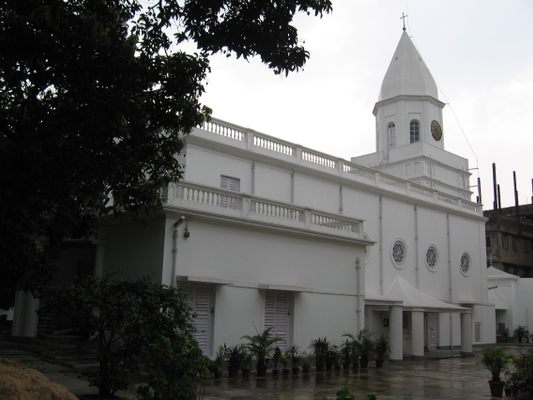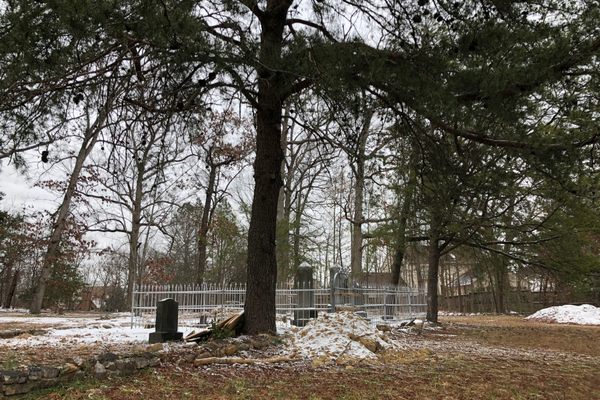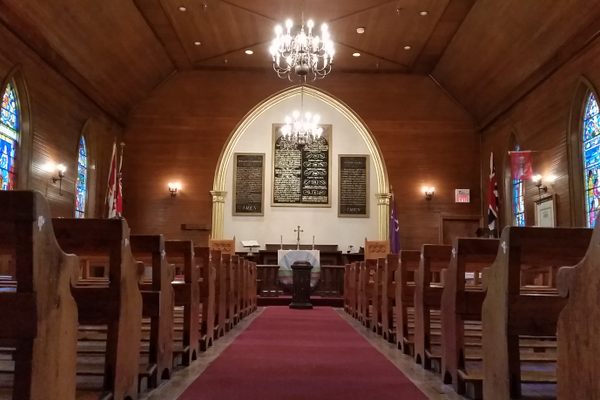About
Navigating through the densely congested bylanes of Barabazar, Kolkata’s largest and busiest wholesale market, you'll stumble upon the Armenian Church of the Holy Nazareth. The church is a far cry from the din and clamor of the city’s trading district. Although one among three Armenian churches in the city, the Church of Holy Nazareth has the most storied past and is a beloved cultural icon of Kolkata's Armenian community.
In the 17th century, as the port city of Kolkata (then called Calcutta) was gaining economic prominence with the development of maritime trade, Armenians, primarily merchants and traders, accepted the invitation of the British administrator Job Charnock to become among the first foreign immigrants to formally settle in the city.
Regarded as the "Mother Church of the Indian Armenians," the sanctuary was first built in the year 1688 and then rebuilt in 1724 after the original wooden structure perished in a fire in 1707. The second church, still standing on the Armenian community's old burial grounds, was named after the principal benefactor of its reconstruction efforts, Agha Nazar. The steeple, the belfry, and the clock tower were added later.
The church complex comprises the luminous marble edifice of Kolkata's oldest existing Christian church. To a first-time visitor, the pristine white structure seems like an island drifting on a sea of old tombstones. Reposing under the sun-dappled shade of the tropical trees that border the compound, these tombstones are mostly plain or embellished with marble crosses, with some bearing inscriptions in the Armenian script and the rest in the Roman script.
The cemetery, dotted with potted plants, is perhaps most famous for being the final resting place of Rezabeebeh Sookia. Her grave dates back to 1630, which makes it the oldest Christian grave in Kolkata, and proves that the arrival of the Armenians to the city predates that of the English in 1690.
The interior of the church is spacious and awash in natural light. A staircase leads up to an upper gallery decorated with frescoes and paintings. Dark wooden pews flank a red-carpeted aisle leading up to the altar. The Armenians are Apostolic Christians, a branch of the Oriental Orthodoxy, who believe that Christianity came to Armenia through two apostles of Christ, Bartholomew and Thaddeus. Hence, 12 candles burn brightly at the altar, symbolizing the 12 apostles.
The three oil paintings that constitute the main altarpiece are representations of the Holy Trinity, the "Last Supper," and the Enshrouding of Our Lord. Broad Doric columns support the roof of the church from which ceiling fans have been suspended to provide relief on hot and humid days. The solid silver chandeliers of varying sizes with candle-holders in the shape of an open flower are among the treasures that are part of the church’s inventory.
Even though the numbers of the Armenian community in Kolkata has been reduced to a few hundred, the Armenian Church continues to be the focal point of the diaspora’s religious, cultural, and educational activities.
Related Tags
Know Before You Go
There is no entry fee. Photography is prohibited inside the church but allowed outside the building. Check before going to be certain the courtyard is open for viewing.
Delhi and Rajasthan: Colors of India
Discover Colorful Rajasthan: From Delhi to Jaipur and Beyond.
Book NowCommunity Contributors
Added By
Published
May 3, 2019
Sources
- https://www.goyajournal.in/blog/an-armenian-christmas-in-kolkata?rq=armenian%20christmas
- Calcutta: A Cultural and Literary History by Krishna Dutta
- Calcutta Mosaic: Essays and Interviews on the Minority Communities of Calcutta edited by Nilanjana Gupta, Himadri Banerjee, Sipra Mukherjee
- http://freepages.rootsweb.com/~chaterfamilytree/genealogy/History_Armenian_Church_Calcutta_Inventory.html


































